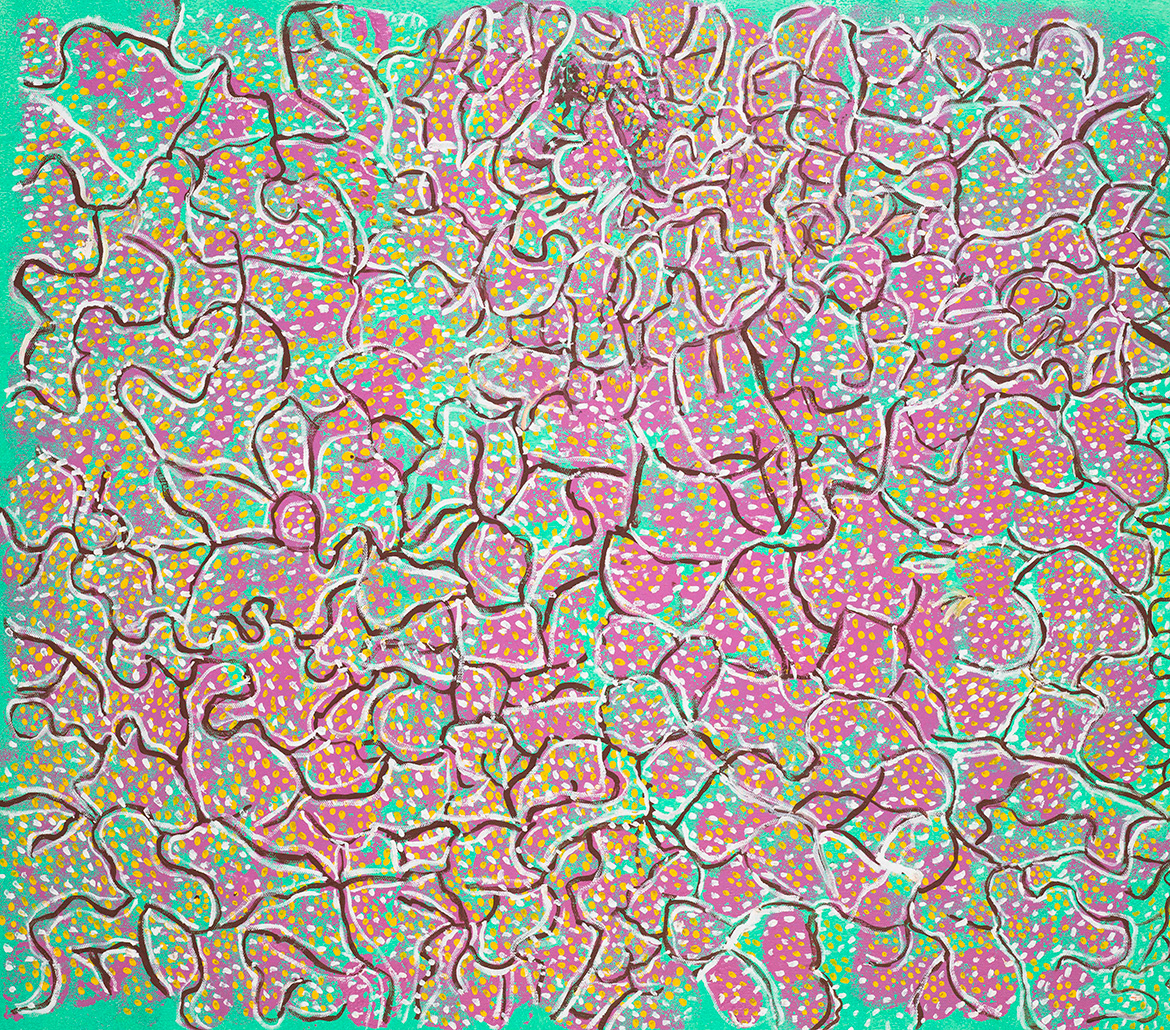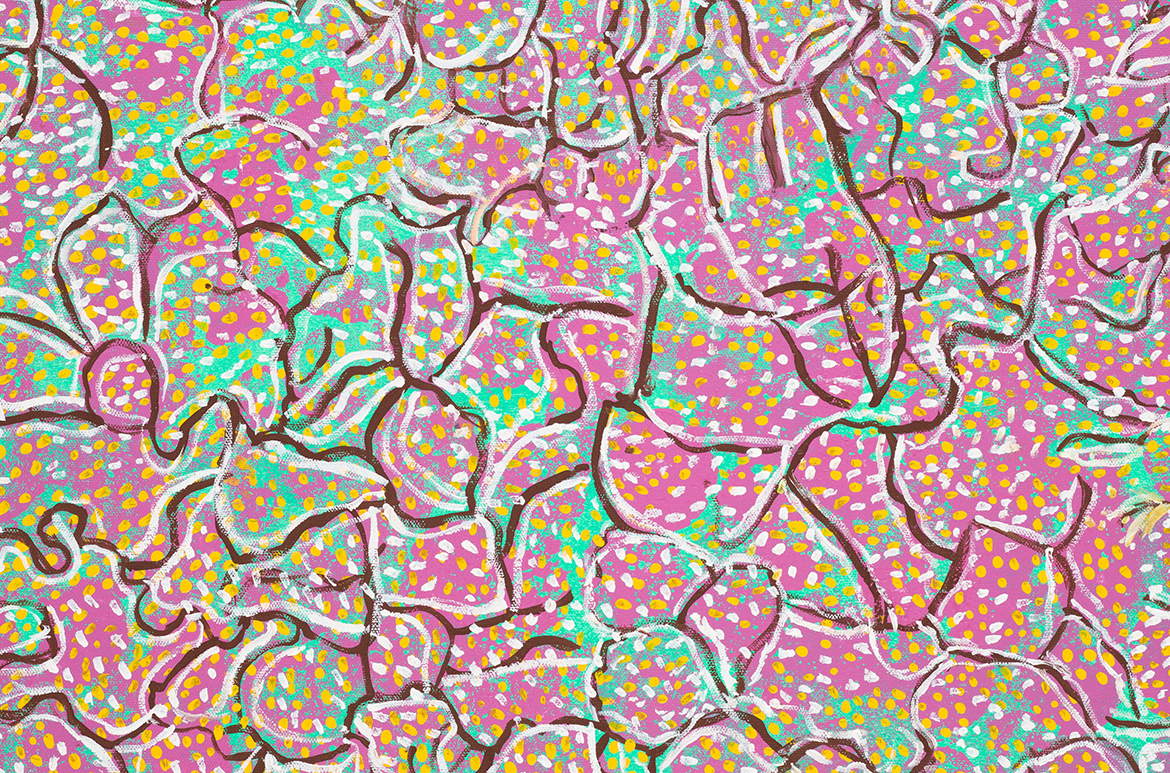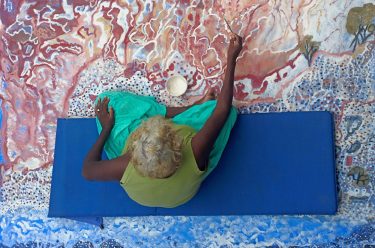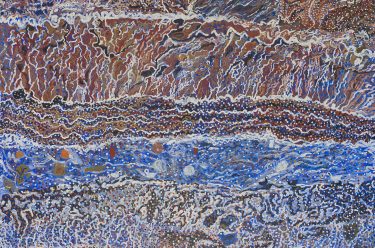As we celebrate National Wattle Day on the first day of September each year, we delve into two works that include the wattle — with over 1,000 species of acacia Australia-wide, it’s the nation’s largest family of flowering plants. While the flowering times of wattle vary greatly depending on the region, Australia’s national flower — the Golden Wattle (Acacia pycnantha) — displays our national colours, green and gold, with flowers from the beginning of September signalling the start of Spring.
The wattle has become a popular symbol of Australia and Australians and can be depicted as a unifying symbol for land and people. The wattle flower is also synonymous — as is the poppy —to acknowledge those Australian service men and women that have sacrificed and continue to sacrifice their lives.
Mavis Ngallametta ‘Mo’Yakal (White and yellow wattles in flower)’ 2008
Referring to the painting Mo’Yakal 2008 (illustrated), Mavis Ngallametta said ‘White and yellow wattle flowers are all around starting in the Easter month of April with white ones and then finishing with the yellow ones around June.
An elder of the Putch clan and a cultural leader of the Wik and Kugu people of Aurukun (Cape York Peninsula, Far North Queensland), Ngallametta was one of the most well-regarded senior community-based artists in Australia, depicting her community’s riotous scenes of post-wet season abundance, a climatic phenomenon well known to people who live their lives just feet above the swamp line. Many of Ngallametta’s works were bold and celebratory — with brightly coloured flowers.
ARTWORK STORIES: Delve into QAGOMA’s Collection highlights for a rich exploration of the work and its creator
ARTISTS & ARTWORKS: Explore more works by Mavis Ngallametta in the QAGOMA Collection

Watch | Delve into ‘Mo’Yakal (White and yellow wattles in flower)’
Explore the work of Mavis Ngallametta with Katina Davidson, Curator of Indigenous Australian Art, QAGOMA
Curatorial extracts, research and supplementary material compiled by Elliott Murray, Senior Digital Marketing Officer, QAGOMA
Acknowledgment of Country
The Queensland Art Gallery | Gallery of Modern Art (QAGOMA) acknowledge the Traditional Owners of the land on which the Gallery stands in Brisbane. We pay respect to Aboriginal peoples, Torres Strait Islander peoples, and Elders past and present. In the spirit of reconciliation, we acknowledge the immense creative contribution First Australians, as the first visual artists and storytellers, make to the art and culture of this country. It is customary in many Indigenous communities not to mention the name of the deceased. All such mentions and photographs are with permission, however, care and discretion should be exercised.
#QAGOMA


